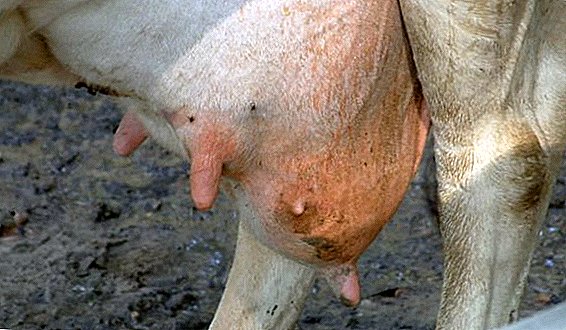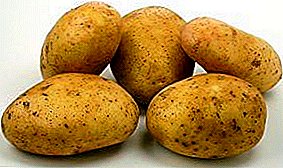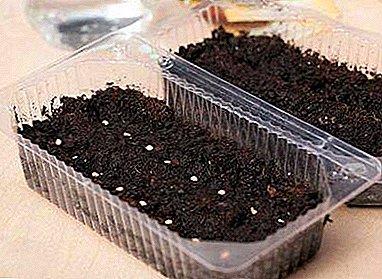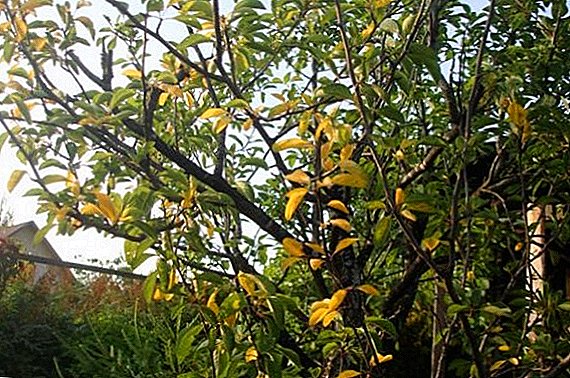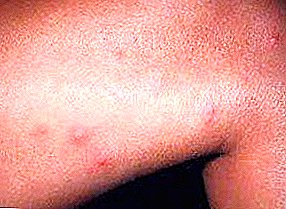
Unpaired and ringed silkworms are dangerous pests of fruit trees.
Their voracious caterpillars are able to leave the gardener with virtually no crops.
To save the garden from the invasion of silkworms is not difficult if know breeding patterns insects and apply effective methods to combat them.
Types of silkworm
Unpaired
 This is a butterfly related to the Wolf family.
This is a butterfly related to the Wolf family.
It is rather large in size, and the female differs significantly from the male in size, shape and color.
Thanks to this fact, the unpaired silkworm gets its name.
The wingspan of the female is about 8 cm. On its yellowish-white front wings, transverse wavy stripes of a dark brown color are clearly pronounced. The paws and antennae of the female are black, and the fat belly is grayish-brown. The tip of his heavily pubescent.
A male silk moth can be recognized by its unusual dark gray antennae, shaped like feathers. The wingspan of its yellow-gray wings is no more than 4.5 cm. Wide stripes and darker spots are visible on the front wings. The abdomen of the male is thin with a tassel of hairs at the tip.
reference - Due to the unusual structure of the antennae, the male of the Gypsy Moth is able to locate the female for 11 km!
Butterfly eggs are colored first yellow and then pinkish white. Their shape is round and slightly flattened, and a diameter of not more than 1.2 mm. Hairy brownish-gray caterpillars are distinguished by the fact that on their backs there are 11 pairs of red and blue warts, each of which is covered with a bundle of hair. The size of the tracks reaches 7.5 cm.
Gypsy moth winters in egg stage. In early spring, the caterpillars are born from them, which, spreading through the trees, begin to actively feed on the buds, leaves, buds and flowers. Thanks to the hairiness and with the help of the wind, in search of food, the caterpillars are capable of covering distances of about 12 km. They feed heavily for two months and then weave cocoons between the bark or between the leaves and pupate.
 In two weeks in July-August, butterflies hatch from cocoons. After mating, they lay eggs on the bark of tree trunks, stumps, among stones and in the lower part of fences.
In two weeks in July-August, butterflies hatch from cocoons. After mating, they lay eggs on the bark of tree trunks, stumps, among stones and in the lower part of fences.
Butterfly eggs mix with grayish fluff, as a result of which the clutches become similar to yellowish-gray pillows up to 3 cm in diameter, completely covered with hairs.
A photo
Now you can look at the silk moth in the photo:



Ringed
This is a small beige-colored butterfly from the family of cocoon-needles with a wingspan of not more than 4 cm. There is a dark stripe on the front wings. Eggs butterfly lead-gray, cylindrical in shape. The color of the caterpillar cover is gray-blue with a distinct white line in the middle of the back and orange and black-blue on the sides. The length of the caterpillar is about 6 cm. It is densely covered with short, velvety, as well as long, sparse hairs.
The female silkworm lays up to 400 eggs around the shoots, twigs or leaf stalks. The masonry looks like a wide ringcovering the escape. For such a characteristic form of egg-laying ringed silkworm and got its name.
From the remaining eggs to hibernate in the spring during the swelling of the kidneys the caterpillars emerge. Actively feeding, they go through 5 stages of molting. Caterpillars usually eat at night and live in colonies., in the afternoon accumulating in forks of thick branches and arranging nests woven from cobwebs there. After about 45 days at the beginning of June, the caterpillars move into folded leaves, braid them with a strong cocoon, climb inside and turn into a pupa. A couple of weeks from the cocoon flies butterfly.
A photo



Close relatives of pests
In silkworms, there are several species that are close in morphological features: in the ringed - cocoon-spreading poplar and euphorbia, in the unpaired, the golden silkworm, otherwise known as the goldfinder. These butterflies are similar in appearance, but differ somewhat in size and color shades.
Geographical distribution
 Habitat of the Gypsy moth is the whole of Europe to the southern regions of Finland and Scandinavia, as well as North America, North Africa, Japan and the countries of Asia Minor.
Habitat of the Gypsy moth is the whole of Europe to the southern regions of Finland and Scandinavia, as well as North America, North Africa, Japan and the countries of Asia Minor.
In Russia, the pest is common in the south and the entire territory where oak grows.
It is also found in Siberia, the Baikal region (55-57 ° north latitude), in the Far East.
Ringed silkworms are common in Europe, with the exception of the Far North, in South and North Korea, Japan, and the northern part of China. On the territory of Russia, it lives in the Far East and Siberia.
What are dangerous?
Both species are pests of both deciduous and fruit crops. They can harm more than 300 species of trees. From fruit crops, the unpaired silkworm prefers cherries, plums, pears and apples, and the ringed ones prefer only apples..Caterpillars represent a danger to the garden.
that feed on leaves, young buds and flowers.
One silkworm caterpillar for two months of its development is able to eat up to 30 young leaves. With mass congestion and without timely protection measures, voracious pests leave the tree completely without foliage. As a result, the plant dries and dies. Five or six clutches of silkworm eggs on one tree is a serious threat to him.
Prevention and control of unpaired silkworm
 The fight with the silkworm begins with regular inspection apple and other fruit trees in autumn and early spring.
The fight with the silkworm begins with regular inspection apple and other fruit trees in autumn and early spring.
The discovered egg-laying is carefully collected and burned. They can also be buried in the ground half a meter deep.
The shoots with spiral masks of the ringed silkworm are cut and burned too.
Hatched Caterpillars are harvested by hand.. The young generation of the ringed silkworm can be easily found at the forks of the branches in the morning. Also effective glue trapsfixed to the bottom of the trunk. They prevent the spread of pests from clutches that are at the roots.
In the case of the mass attack of the Moth, the trees are sprayed with insecticides such as "Antio", "Zolon", "Karbofos", "Metathion" or "Phosphamide". Treatments are performed during the period when the caterpillars rise to the crown, and at the end of their migration. We do not recommend treating trees during flowering, because chemicals can harm beneficial insect pollinators.
The following biological products are also used against the pest: "Lepidotsid", "Dendrobatsilin", "Entobakterin", "Bitoksibatsilin". They are sprayed on the trees during the emergence of caterpillars. After a week, the treatment is repeated.
The use of biologics requires certain conditions: air temperature is from 18 to 25 ° С, and humidity is not less than 60%.
In the summer, during the setting and ripening of fruits, it is better to use harmless folk methods to control the silkworm. Effectively deter pests saturated solution of coniferous concentrate (4 tablespoons per 10 liters of water). This solution can be sprayed trees several times. Caterpillars are also afraid of the infusion of wormwood, rotten hay, tomato tops, mustard.
Pests can get into the crown knock down a strong stream of water from a tree, collect them from the ground and destroy. Effectively save the trees from caterpillars and the natural enemies of insects are birds. To attract birds to the garden place on the site several birdhouses.
As we see, unpaired and ringed silkworms can cause great damage to the orchard. To cope with pests or even prevent their spread, it is important to notice the danger in time and take all necessary measures.


